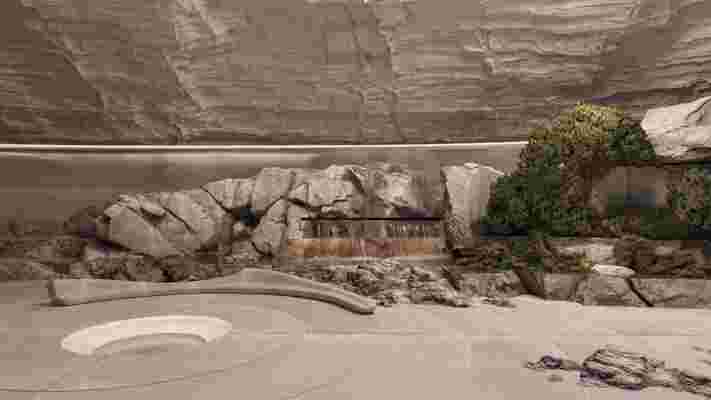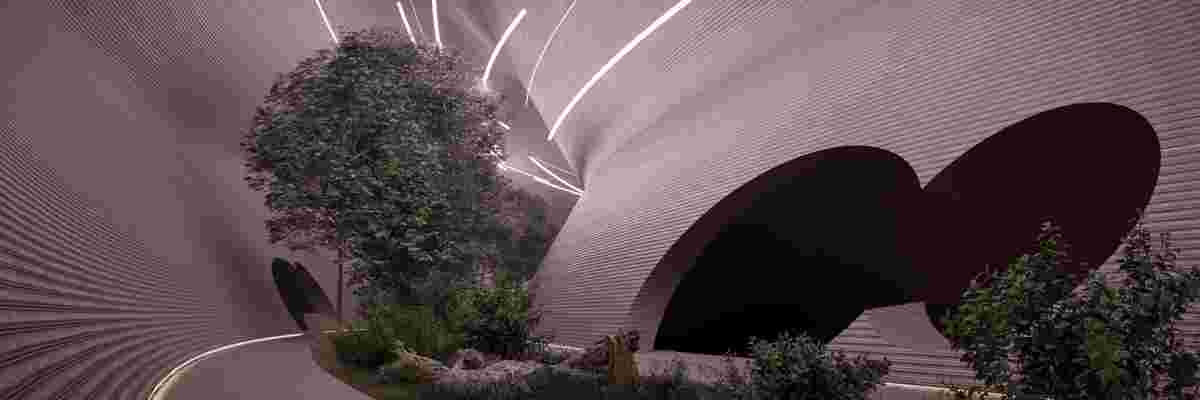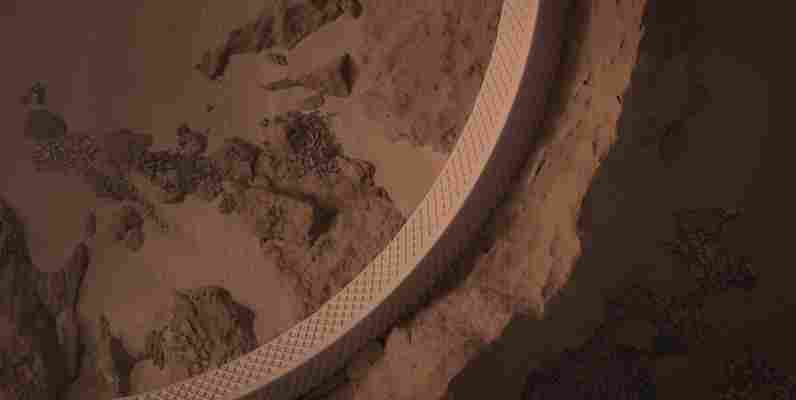Two years ago, when seemingly the whole world was under a strict pandemic-induced lockdown, plenty of people embarked on odd projects that they either didn’t have time for or interest in before COVID-19. While some people took a DIY approach to redecorating, others sought solace in baking. Some, however, got to thinking about the future—one in which Earth may not be inhabitable anymore. Not necessarily in a fatalist sense, rather a curious one. Case in point: Ukrainian architecture firm, Martian, who spent the early days of the pandemic designing and conceptualizing a 3D-printed Martian settlement, dubbed Plan C—even though there are no signs of life on Mars.

Plan A, of course, is life on Earth, and Plan B was a mere project proposal for an underground development that, to Makhno Studio’s surprise, made headlines across the world. “In 2020, during the first lockdown, we wondered whether it was possible to make life underground comfortable if life on Earth became just impossible. That’s how we came up with our Plan B,” the firm admits. Plan C is the conceptualization of the development with or without signs of life on Mars. The studio describes it as their vision of the actual aesthetics rather than just a potential daydream.
The concept was the idealist solution to whether or not underground living would not only work but be comfortable. It isn’t designed to make the covers of design magazines, per se, but it certainly boasts a look: It’s a donut-shaped settlement that looks like something out of the future. And the architects thought of everything: For starters, the settlement resides within a crater, which would protect Plan C from Mars’s extreme temperatures and varying environmental conditions that range from sandstorms to solar radiation.

Potentially fatal natural disasters aside, the planet’s conditions aren’t exactly human-ready because we’d need space suits, oxygen masks, and life support machines just to survive a few seconds on Mars’s carbon dioxide–dominated surface, but Plan C’s 3D-printed walls would make living possible. In other words, Plan C is like a highly protective 3D-printed bunker that comprises public halls, dining concepts, research spaces, and sleeping areas. The firm says, “Technology is moving so fast. 3D printers are already printing real plant-based salmon, which can be eaten. Therefore, the house’s walls in some future are also quite possible.”
And perhaps unironically, there are as many plants in Plan C as there are people, and they all live in a massive public hall that runs the length of the structure. Unlike the plants on Earth, however, the ones on Mars would grow courtesy of phyto, ultraviolet, and infrared lighting. And the greenery isn’t just to give Plan C’s residents something pretty to look at: It will help convert the abundant carbon dioxide into oxygen.

Even though the architects seem to have creatively addressed any potential threat to human life on Mars, the planet that’s a whopping 141 million miles away from the sun isn’t livable for humans just yet. That said, it’s the most similar to Earth—even though temperatures can dip as low as negative 220 degrees Fahrenheit. So, perhaps Makhno Studio’s vision for a future away from Earth isn’t that far off. And for all the design enthusiasts, rest assured that the architects are taking Plan C’s look seriously. Hopefully, we can all stay on Earth for at least a little while longer, but it’s still good to know that perhaps one day, when our beloved planet is no longer livable, we have a stylish backup plan on Mars. And maybe even more of the world’s most creative architecture firms will join forces to bring these unique developments to the formerly uninhabitable planet.

Leave a Reply